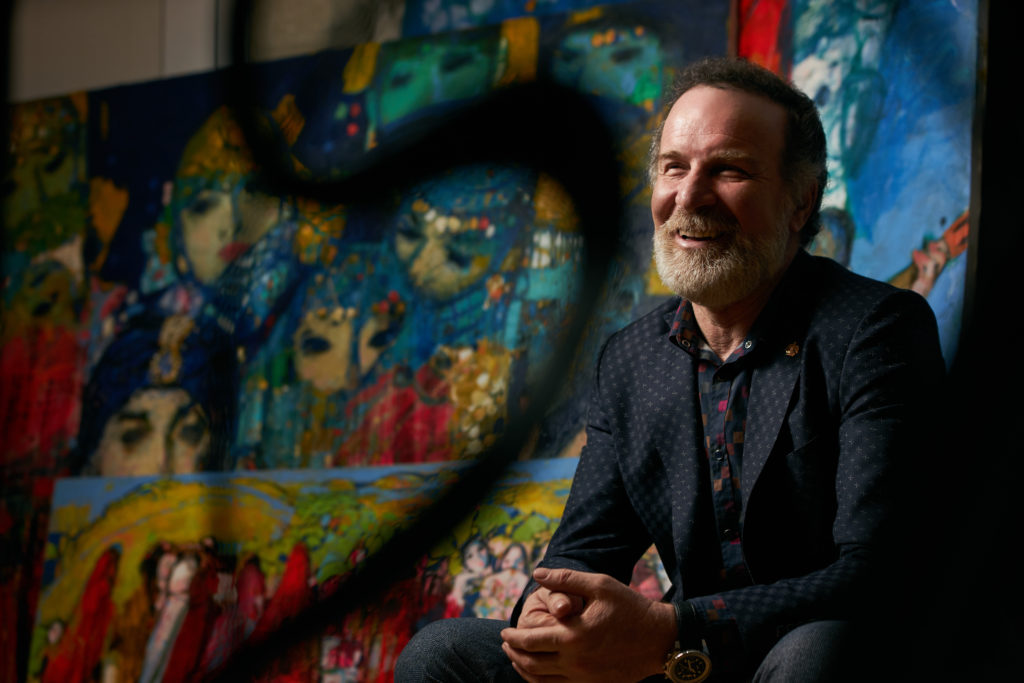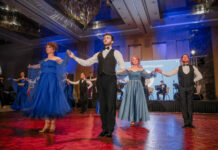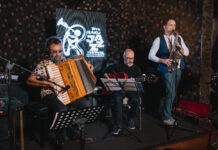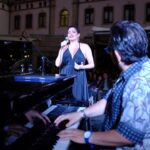BY RAYA ABBASOVA
AZERI OBSERVER CONTRIBUTOR
Almost every article, every interview with the famous Azerbaijani artist and professor of a number of prestigious European Academies, Sakit Mammadov, starts with a very long list of his awards, orders, medals, prizes, and academic degrees. Sakit Mammadov holds the titles of Baron and Count and was awarded the European Order of Glory and Knights of the International Maltese Order of Malta Officer’s Cross of the Alliance of the Cavaliers and was declared the Man of the Millennium, is also a humble, plain, and sociable man. It is interesting to talk with him and our dialogue allowed me to believe that Sakit Mammadov’s international recognition is a logical result of his life philosophy. He is a unique artist who consciously rejects many established stereotypes. Neither time, nor world cataclysms, nor life’s obstacles can change Sakit Mammadov’s optimistic view of the world. His paintings are full of love, warmth, and deep meaning, which is not easily understood by everyone, and therefore they are especially attractive. “Coding” with a variety of different symbols in his paintings is not a desire to be distinctive, but a special style of the artist.
“A painting is not only a picture available to the eyes of the beholder, but, is of the author’s revelation: his perception of life and time in an immense boundless space. There are a lot of unexpected conclusions, unpredictability, which, if successful, leads to new solutions, consonant with the pictures of the changing world,” the artist said. It’s as if he heard my thoughts caused by the ‘14 Beauties’ series paintings he is currently working on.
Question: Why are you doing 14 Beauties?
Answer: Without going into details, I will note that a lunar day lasts for 14 terrestrial days. I am still working on the project, and therefore I will forbear from more detailed explanations. However, I am sure that there is no need for them – every person has his own way to the truth. A painting is, first of all, a space for the realization of one’s own ideas. As you have probably guessed, every Beauty represents one country. So far, I have painted only four out of the14 Beauties: Russian, Japanese, Ethiopian, and Egyptian. There is also a different moon above every Beauty.
Q.: Even at this stage of work, it is possible to see the prospects of uniting these pictures into a series. There is something similar in the faces of the painted Beauties. They arouse an idea about the boundlessness of beauty and are parallel with the lines from Goethe’s West-Eastern Divan: “God is of the east possess’d, God is the ruler of the west; North and south alike, each land, Rests within His gentle hand.”
A.: You are right. The association with the idea of this great German philosopher is really rightful. It demonstrates the idea of peace, a call for unity. The more I work on this project, the more I wish to double the number of portraits.
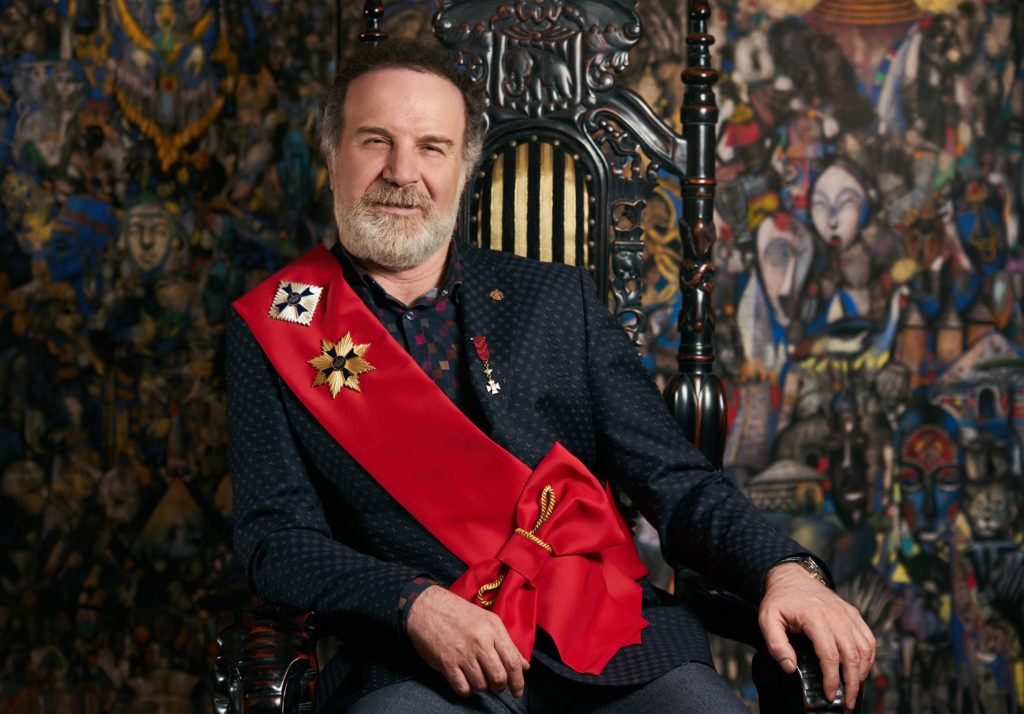
Q.: Your Beauties really impress with their beauty. I also noticed that each portrait carries capacious information about the home country of every Beauty, which is hidden in symbols.
A.: It was planned from the very beginning. Every nation is beautiful in its own way and I strive to convey this unique beauty through the art of painting. The condition of the world is so bad now that it needs some added beauty. Besides, I do not paint ugliness…I do not want to; it does not inspire me.
Q.: You declare yourself as a founder of Opalism. Do you have followers?
A.: Opalism is the style of painting. Firstly, my students are my followers. Beyond them – I do not know. The name is a convention, I do not care about ‘isms,’ what is important for me is the idea. The term emerged spontaneously. I love vivid colors – red, blue, dark blue, yellow. Such a palette, like an explosion, comes forward, or, on the contrary, loses its individuality and dissolves in its ‘fellow colors.’ Such contrasts create some game and radiance of colors. The name of the technique came by accident: an opal pendant of one of my students reminded me of some fragments of my paintings and aroused the desire to continue searching for colors. So, I came to Opalism. This style has a valuable quality among other advantages – it is difficult to fake it, in spite of flourishing plagiarism. But, we always need to remember that the main artist is God. “Who are you painting?” is a question which I was asked many times. First of all, I paint people who played a certain role in my life. An artist learns a lot from life, from the outside world. However, vocational education is also required, in my opinion.
Q.: You touched upon the topic of education, but could you first tell me about your family, your parents?
A.: I am from a working-class family. Today, many people hide their origin and say that they come from Khan or Bey families. I openly say that I was born into a working-class family, and today I hold the titles of Baron and Count.
Q.: As far as I know, these titles also envisage ownership of plots of lands.
A.: For the moment, I do not have land. I have a family coat of arms, a count’s dress, a stamp with my portrait, honorable distinctions, including the Medal Emperor Alexander 1 for merits. I do not know what will be in future.
Q.: Your home, despite it, is not a count’s domain, but has a special energy. I cannot understand what the source of this energy is – your paintings, some interior accessories or anything else, but I have an unusual feeling as if I am in a timeless space.
A.: Thank you, he says with a smile. I must comply with the requirements! My parents were simple people, but they had good taste and raised their children properly. It was not easy for my father to feed his family, but my parents paid a lot of attention to our upbringing. I attended painting and music lessons. At the same time, I wanted to become independent and earned money by playing the guitar at weddings at a young age, without informing my parents. Throughout all my life my heart is full of gratitude to my parents. Despite all life’s hardships, they taught us to walk with our head held high, proud with a sense that we did useful work, helped people, and strived to be better.
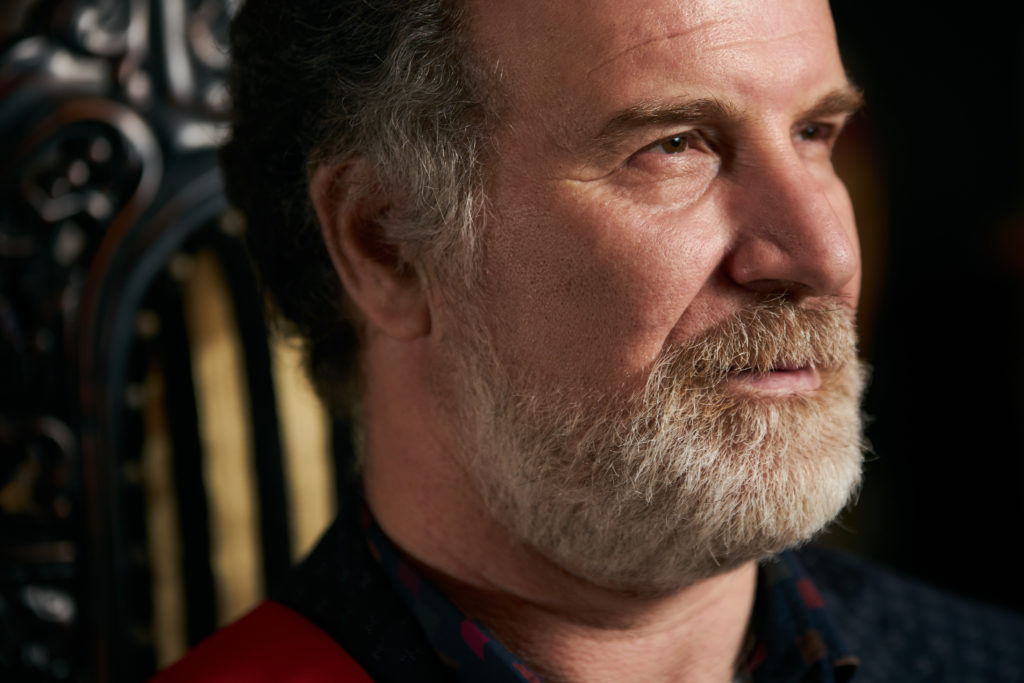
Q.: Could you please tell me about your studies in Leningrad (Saint-Petersburg)? Who of your teachers influenced you the most?
A.: I had many excellent teachers. In Baku, I studied with Ibrahim Rzayev. I remember that all the students looked at him as an icon because he graduated from the Ilya Repin St. Petersburg State Academic Institute of Painting, Sculpture and Architecture. Ibrahim Rzayev enjoyed the utmost respect for his human qualities and professionalism. Now, we are great friends, however, we rarely see each other since he lives and works in Turkey.
In Leningrad, I studied with the famous painter Evsey Moiseenko, who taught me a lot. The Leningrad museums, and especially the Hermitage, where I spent many hours studying the greatest works of art of all time, also helped me a lot. Time puts everything in its place. Today I have great working conditions, my paintings are in demand, and I am well known all over the world. However, I started my career in a small apartment with no conditions for creativity. I had to wait for the children to go to bed in order to start working on my paintings. But I did not complain, I did not despair, and do you know why? I had an aim, and I went towards this aim step by step despite all the obstacles. Then, connoisseurs of art started to buy my paintings. I dreamed to have a place to work in. Thanks to greats efforts, this dream came true too, and that makes me feel confident and satisfied. Now, you see the House Museum of Sakit Mammadov. The three upper floors are a museum, and the two lower floors are workshops. The museum is not for the public at large, but I have a lot of guests from many different countries.
Q.: You deal a lot with young people in your work. What do you think about the new generation, which was born and grew up in an independent Azerbaijan?
A.: I do not like when somebody says: “The current generation is different. They are not us!” It is good that they are different. They should be different – it is one of the main life laws. People were, are and will be different. I like to communicate with young people. It could not be different since I have six children – two sons, a daughter, a son-in-law, and two daughters-in-law. All of them are artists, and they followed their hearts when they chose this profession. My spouse, Aybeniz, is also an artist from some point of view – she was engaged in carpet weaving. But when she gave birth to children, she decided to devote herself to the family. I am infinitely grateful to my wife for her attention, attitude, and respect for my work. I would not have reached such a high professional level without her support. I am very happy that peace and love reign in our family. I am extraordinary happy when we all gather together!
My 10 students are also part of my life. They are all promising artists and people already pay a good price for their paintings. There are a lot of young artists wishing to learn from me, but I am very selective – I take only very talented students. Our relations have nothing in common with commerce. I do not take money for lessons. Moreover, I provide my students with canvases, paints, organize their exhibitions, and do my best to take them with me when I go abroad – everything at my expense. I am pleased with the success of my talented students.
Q.: What else do you need to feel happy?
A.: I am already happy – thanks to the Lord! I am happy because I have achieved almost everything by myself – without anybody’s patronage, without the help of my parents. I am happy because I became so famous (it is not modest to say so, but it is the truth) without breaking my own rules – I did not become arrogant or indifferent. I try to help to those who need my help, but will not tolerate lies, duplicity or fawning. I cherish my family, I am proud of my homeland, which gains more international recognition and respect with every new day, as a country aimed at peace and development.
I am becoming more and more famous, and the demand for my paintings is increasing. I have painted portraits of many outstanding figures – Azerbaijan National Leader Heydar Aliyev, Princess Diana, Turkey’s former President Suleyman Demirel, President of the International Federation of Associated Wrestling Styles Raphaël Martinetti, among others. The most important thing is that I managed to choose a way of life from many possible ways that allowed me to find myself in this difficult world. What else does a man need?!
Q.: Let me add that President Ilham Aliyev presented the Pope John Paul II with a portrait of His Holiness painted by you as a gift from Azerbaijan.
A.: Yes, it was a great honor for me. When I decided to paint a portrait of such a high-ranking person, I deeply thought about the dramaturgy of the painting. The modern world is united by the idea of tolerance and people expect a lot from this idea. How to reflect this idea in the portrait of the head of Catholicism? The decision came immediately: the four holy books should all be together! I am Muslim, so I placed the Quran on the top, which is quite logical. I also ‘put’ a Karabakh carpet on the floor. So, the Islamic Holy Book and a unique carpet from the ancient Azerbaijani land of Karabakh decorated the Vatican City, the most sacred place in Catholicism.
